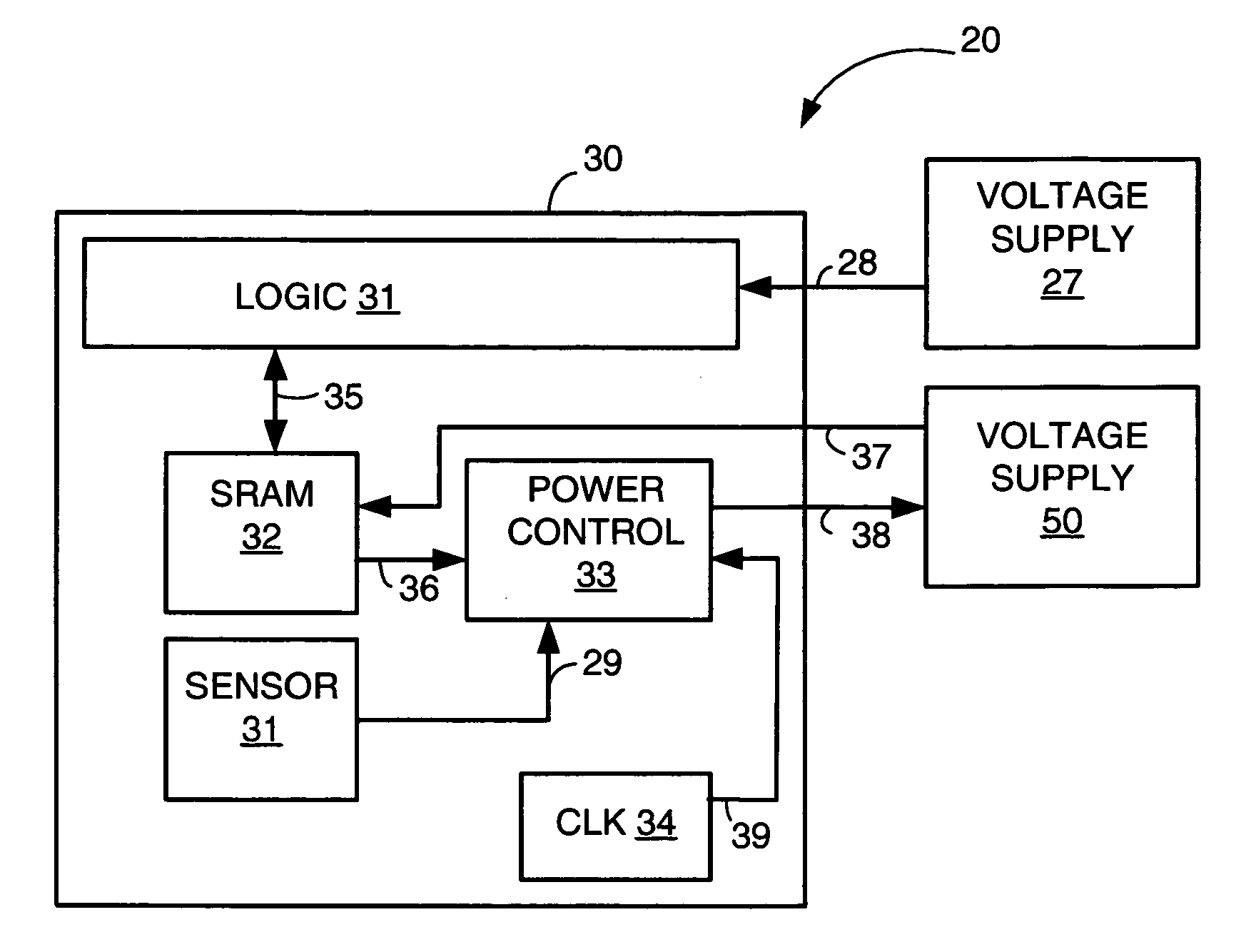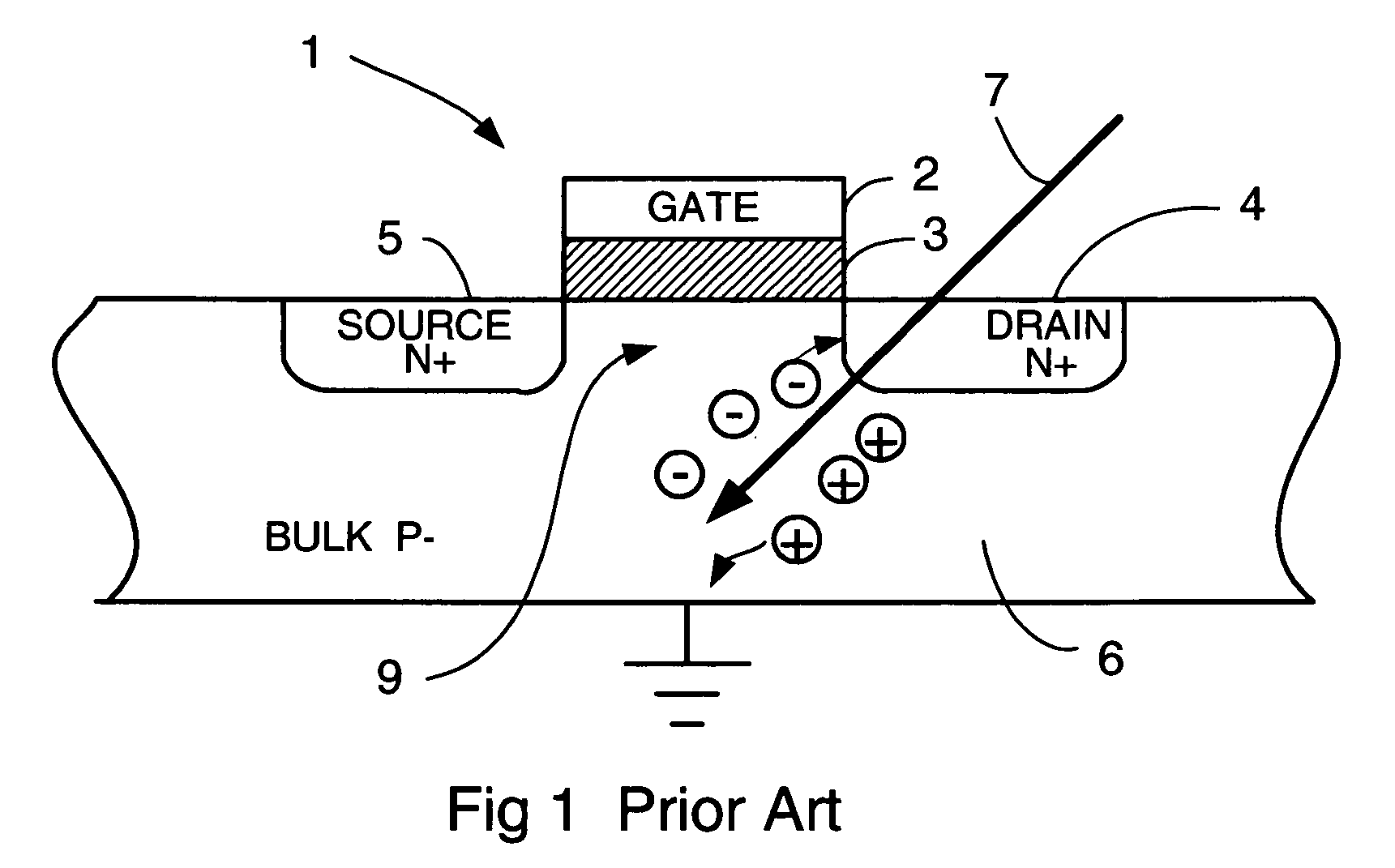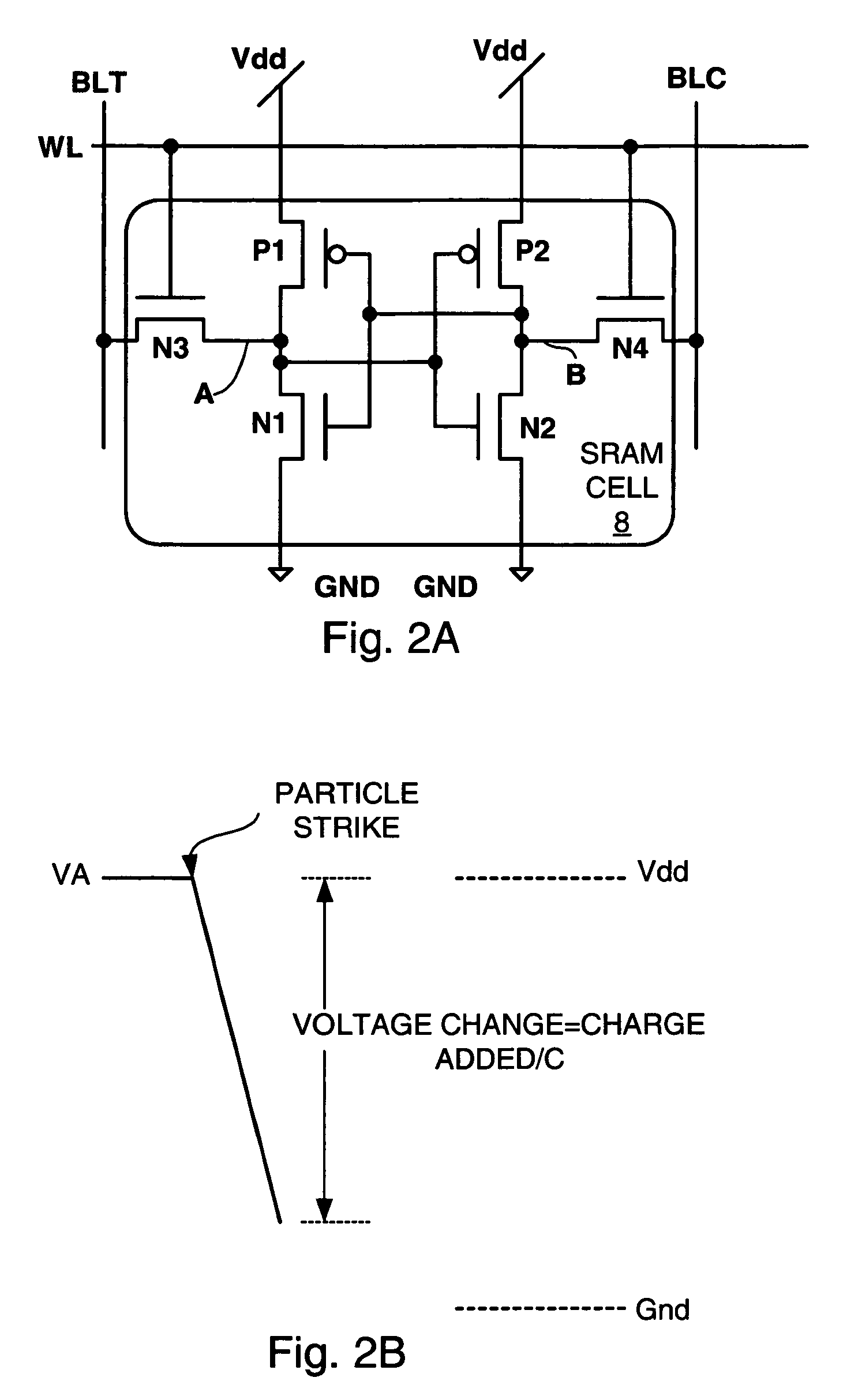Method and apparatus for reducing soft error rate in SRAM arrays using elevated SRAM voltage during periods of low activity
a technology of sram array and sram voltage, which is applied in the field of reducing soft error rate in sram memory, can solve the problems of large amount, large alpha particles, and large high value resistors in semiconductor structures, and achieve the effect of reducing a soft error ra
- Summary
- Abstract
- Description
- Claims
- Application Information
AI Technical Summary
Benefits of technology
Problems solved by technology
Method used
Image
Examples
first embodiment
[0048]power control 33 is shown in FIG. 4A. This embodiment causes Vdd to be increased from the first voltage value to the second (higher) voltage value if a particular number of cycles of clock 34 have occurred without the SRAM 32 reporting an access on signal 36. The particular number of clock cycles (at a particular frequency) represents a time interval specified by the designer of electronic system 20. A compare value 40 is loaded during startup of electronic system 20, or, alternatively, is simply hardwired into compare value 40. For example, in a computer system embodiment of electronic system 20, a value is scanned or otherwise written into compare value 40. The value for the particular number of cycles is written into compare value 40 is chosen by the designer to satisfy the time interval according to the designer's requirements regarding power dissipated, and, perhaps, the designer's knowledge of applications that are run on electronic system 20. A large value will cause Vd...
second embodiment
[0049]power control 33 is shown in FIG. 4B. In this embodiment, if an SRAM 32 is used at more than a predetermined access rate, the Vdd is set to a first voltage value; if the SRAM 32 is used less than the predetermined access rate, Vdd is set at a second voltage value. The first voltage value is less than the second voltage value.
[0050]Power control 33 in the embodiment of FIG. 4B has a compare value 49, that, like compare value 40 of FIG. 4B, is hardwired or written by other portions (not shown) of an electronic system based on a designer's choice of tradeoff between power dissipated in electronic system 20 and SER. Compare value 49 contains an access rate limit specified by the designer. A counter 46 counts up responsive to the clock signal on signal 39, output by clock 34. Counter 46 counts down responsive to a signal on signal 36, scaled by scale 47. For example, if the SRAM 32 can be accessed, at most, four times for each cycle of clock 34, in an exemplary embodiment, scale 47...
third embodiment
[0053]FIG. 4C shows power control 33. This embodiment provides for two or more values of Vdd that are selected based on a designer specified relationship between an SRAM access rate and the value of Vdd supplied to the SRAM. Scale 67, signal 68, counter 66 are similar to scale 47, signal 48, and counter 46 as described in reference to FIG. 4B. That is, counter 66 counts up responsive to clock signals from clock 34 (see FIG. 3) sent on signal 39. Counter 66 counts down responsive to SRAM accesses, as scaled by scale 67. At any point in time, therefore, the value of counter 66 contains a value of the SRAM access rate. VID information 69 is hardwired, or is written to from another part of electronic system 20, such as logic 31 (see FIG. 3), with information as to what Vdd should be versus SRAM access rate. Many modern voltage supplies receive a VID (voltage identification) from a semiconductor chip and provide a voltage that is controlled by the value transmitted on the VID. The VID is...
PUM
 Login to View More
Login to View More Abstract
Description
Claims
Application Information
 Login to View More
Login to View More - R&D
- Intellectual Property
- Life Sciences
- Materials
- Tech Scout
- Unparalleled Data Quality
- Higher Quality Content
- 60% Fewer Hallucinations
Browse by: Latest US Patents, China's latest patents, Technical Efficacy Thesaurus, Application Domain, Technology Topic, Popular Technical Reports.
© 2025 PatSnap. All rights reserved.Legal|Privacy policy|Modern Slavery Act Transparency Statement|Sitemap|About US| Contact US: help@patsnap.com



